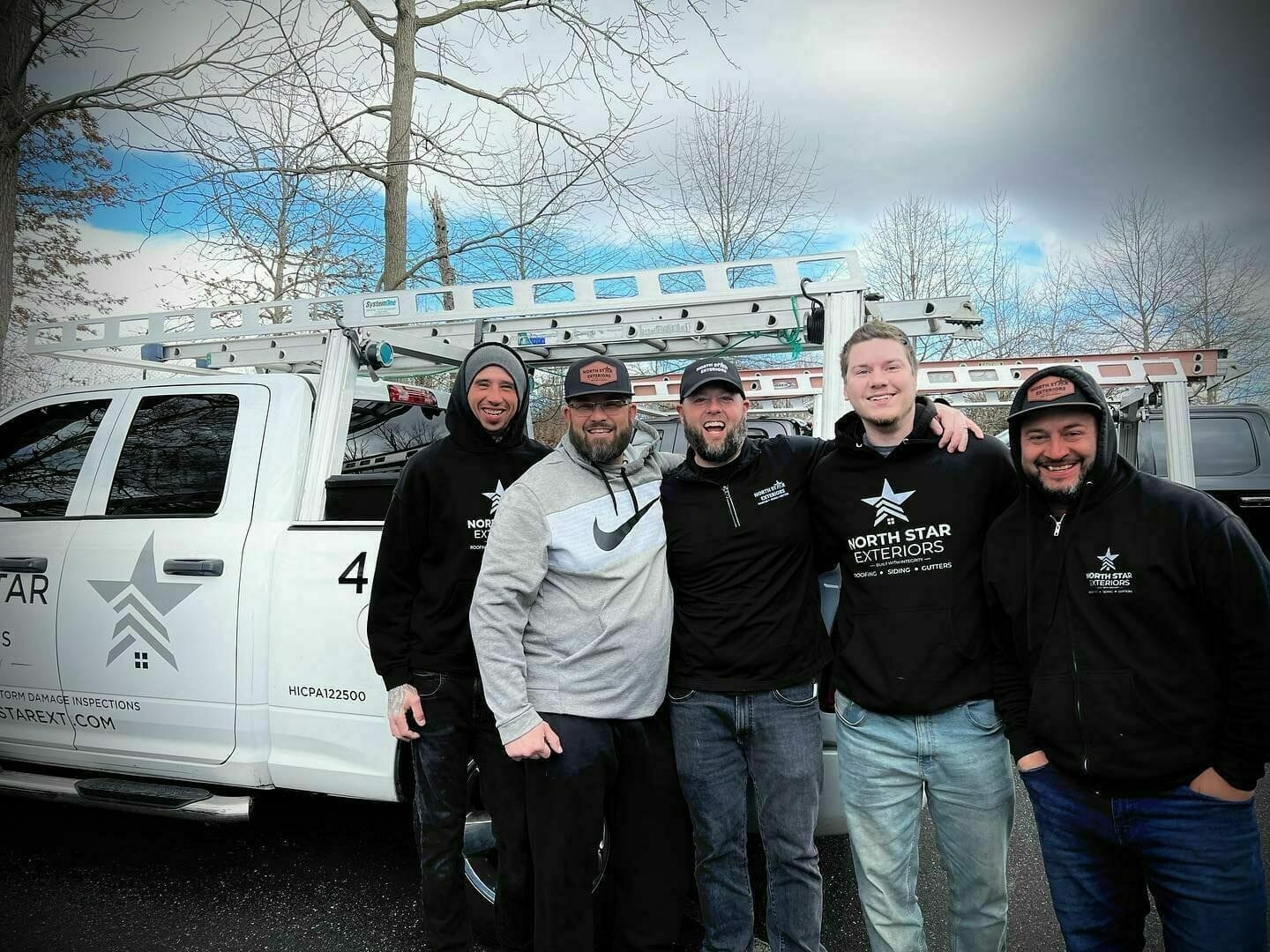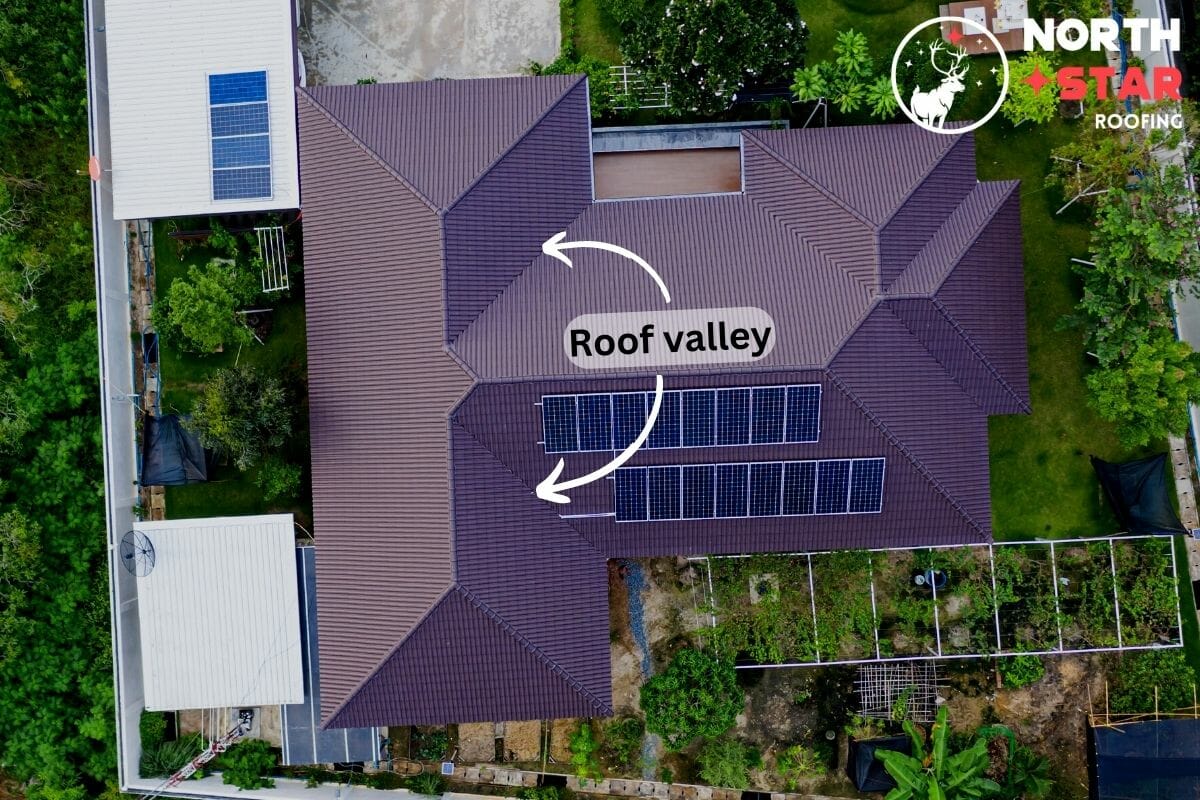Roof valleys are a common feature on homes with pitched roofs. They are crucial parts of a roof that help divert rainwater to the gutters. Valleys also add architectural appeal to your home by enhancing its features and adding a variety of colors.
Your roofing contractor may ask whether you want an open or closed valley while installing the new roofing material or repairing an old valley, but it’s possible for people to get confused between the two. If you are getting a new roof, or have damaged roof valleys, it is crucial to have properly protected valleys.
At North Star Roofing, we have been helping homeowners learn more about their roofs and the roofing industry. Today, we will help you choose the right type of roof valley system for your home. This blog explains different types of roof valleys, why they are essential, and how to ensure your home has the right one.
What Are Roof Valleys?
You may have noticed the various places around your house where water flows. Some of these are, of course, gutters and downspouts. But there’s also a place where water flows before reaching the gutters – the roof valley.
This is because rainwater can’t run off of every single part of your roof at once, otherwise, it would flow like a waterfall over the sides and down into your yard below. Instead, some parts of your roof have special channels that direct water off and away from the roof, so it doesn’t pond and leak inside your home. These channels are called valleys.
A roof valley is where two slopes meet. On a pitched roof, it’s the area that looks like a line running down from the top of your house to its lowest point at the eaves. This slope is there to divert water smoothly down to your gutters. There are generally two roof valley types commonly found on homes in the United States, an open valley, and a closed valley.
Closed Valley Roof
A closed valley roof is one in which the valleys are covered entirely by shingles. There may or may not be a waterproofing layer behind the shingles, depending on what type of material you choose for your roofing project. A closed valley system is chosen by homeowners who want their roof shingles to look seamless, and they usually cost more than standard open valley systems.
However, closed valley roofs have certain issues.
- When there’s no special water-diverting passage it can flow in all directions and possibly slip behind the shingles.
- Closed valley shingles also tend to deteriorate faster due to excess water runoff, and accumulation of snow and debris. You will have to replace these shingles more often.
- You will need to clean the roof valleys regularly. Pressure washing isn’t suitable for asphalt and fiberglass shingles. It removes the essential UV-blocking and algae-resistant granules from the shingle’s top layer.
- Valley shingles are also damaged by flying debris when high winds blow through the area.
That’s why there’s a more efficient valley system that involves special materials to carry the water down the roof– an open roof valley.

Open Valley Roof
A roof with an open valley design is called an open valley roof. In this system, the shingles do not cover the valleys. Instead, the roof valleys are protected by flashing material in place of the woven shingles. Flashing works as a waterproofing layer that prevents roof leaks and mold growth. Rainwater, snow, debris, and everything else flow freely over the valley flashing. Open valleys are also known as flashed valleys.
The open valley roof has a pathway made of a waterproof material such as metal, rubber, or stone. A V-shaped or W-shaped flashing helps prevent water from flowing all over the roof in different directions. Because of its design, this type of valley is best suited for areas that receive a decent amount of rain or snowfall every year. The open, or flashed valley is also convenient for windy areas, as debris can slide down the flashing and slip easily off the roof.
For more information, read our blog on the topic “open vs. closed valley roofs.” It’s important to choose the right type for maximum protection and seamless curb appeal.
Let’s take a closer look at why roof valley flashing is important for a pitched roofing system.

Why Is Roof Valley Flashing Important?
Without adequate protection using valley flashing, things could get bad quickly. You’ll have to deal with leaks and cracked shingles, putting all kinds of stress on your home’s structure as well as significantly increasing your energy costs by allowing heat loss through those leaks!
Without a good fit between the shingles and the sides of your house, water can leak into your attic and cause significant damage to your ceilings. If there’s no valley flashing installed on your roof, it won’t be long before mold starts growing, or algae forms on wet surfaces.
Just the words “roof valley” are enough to make you think of cold, wet weather and the prospect of water damage. But now that you know more about valley flashing, you can use this information well, so your home is protected from these problems. There are different flashing materials, so here’s an explanation to help you understand which materials will work best for your roof.
Roof Valley Flashing Materials
Metal, rubber, and concrete are widely used materials to create valley flashing. Out of these, steel, aluminum, and copper are currently the most installed flashing material in the United States.
Metal Valley Flashing
Steel is the most affordable metal option, but it is prone to rust with exposure to water. For this reason, roofers always coat it with a waterproofing material like paint, zinc, aluminum, or copper.
Metals like aluminum and copper are better than using steel since they are already waterproofed, and add to the aesthetic appeal of your home. It is best to use copper flashing if you want an elegant look that stays on for decades without getting damaged.
Aluminum is especially good for regions where the salt content is high in the atmosphere due to close proximity to a lake or ocean. If you live in a coastal region, or near a saltwater lake, aluminum can be the best material choice as it doesn’t corrode from salts.
Concrete Valley Flashing
Concrete valleys are mainly used with slate or clay tile roofs. They are made from a rigid material, which includes sand, gravel, rock, and cement. The concrete is applied as a fluid mixture that hardens over time once installed. It’s one of the most common types of valley flashing material because it’s inexpensive, durable, and easy to install. It can last decades without any problems!
Rubber Valley Flashing
Rubber is a waterproof material that’s also highly resistant to heat and fire damage. Rubber roof valleys are the most versatile of all valley types since they can easily be molded into different shapes. If you’re concerned about how your house will look with a modified bitumen rubber membrane on your roof, don’t worry! A modified bitumen rubber membrane can easily be stained to match your roof shingles.
A rubber membrane is also an excellent option for sealing dead valleys or protecting your home from moisture damage and leaks. Wait, are you wondering what a dead valley is? Well, it’s that area of a valley that is out of reach and is among the main causes of roof leaks.
It is essential to know about this part of your roof so that you can ask your roofing contractor to pay more attention to it before it starts causing issues.
Dead Valleys: Location & Solution
A dead valley roof has a valley portion that’s not connected to the rest of the roof. It’s a type of small valley where multiple roof slopes meet. Dead valleys are often triangular and remain shaded or hidden from view at all times. They have a flat or low-sloped surface where water can pool and cause damage.
A dead valley is a roof section with no way for water or debris to flow off without special flashing in place. You need a larger piece of flashing to cover the dead valley roof area. This will prevent shingle damage and avoid debris and water pooling. There are many instances where handymen or inexperienced roofers don’t install dead valley roof flashing, which is a sign of poor workmanship and a common roof valley problem. So here’s some advice from one of our top residential roofing experts below.
Note From A Roofing Expert
Almost all pitched roofs have regular roof valleys, and you may not even notice your home has dead valleys. In most cases, where homeowners hire handymen or inexperienced roofers, they do not flash the valleys correctly, which later becomes a huge issue for the home. Roof valley flashing is a complex roofing job that’s best left to your local roofing contractor, who specializes in this type of work and has plenty of experience doing it in your area.
If you need roof valley flashing services in Lansdale, North Wales, or surrounding areas in Pennsylvania, we can help you!
Most Trusted Roof Valley Flashing Service
For years, North Star Roofing has been providing homeowners with the best solutions for their roofing projects. No matter how big or small your project may be, we provide the most honest and highly efficient services, such as roof replacement, roof valley repair, and flashing installation. North Star Roofing is proud to have a team that completes every task carefully and with a dedication to 100% customer satisfaction. If you want to discuss your roofing needs with the experts or learn more about residential roof components, call us at (484) 302-7663. We will be happy to offer you a free consultation and estimate.


